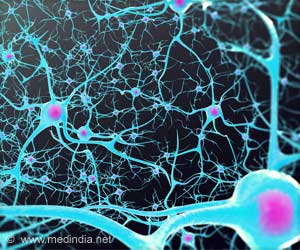Using a diversity of DNA sequencing and human genome analytic techniques, researchers led by Baylor College

"Four were very complex," said Liu. "One had 18 rearrangements in one chromosome. It was beyond our imagination."
About that time, a group of British researchers led by the Wellcome Trust Sanger Institute published another paper in Cell describing massive genomic rearrangements in cancer that they believe emanated from a single catastrophic event.
Lupski, Bi and Liu wondered if a similar situation had occurred in their patients, whose rearrangements occurred early in the germ line – the cells that produce eggs and sperm. The events that had occurred in the genetic code of these patients shared striking similarities to the findings in the patients with cancer.
"First, the patients have many duplications and deletions," said Lupski, a pioneer in identifying and understanding copy number variation, changes that occur in the genome that either duplicate or delete genes, changing their expression with profound effects on the individual patients.
"We used comparative genomic array hybridization, FISH (fluorescent in situ hybridization, which can tell a person how many copies of a certain chromosome exist in each cell) and other techniques to demonstrate that this 'catastrophe' phenomenon exists in the genomes of these patients," said Liu. "This chromosomal catastrophe occurs not only in cancer but can also occur in different developmental tissues. They may occur in the germ line, as in our case, or in the somatic cells. In one case, the patient had this complex rearrangement and the mother also has it, but the rearrangement occurs in only a subset of her cells. It occurred in the mother during development and she then transmitted the rearrangement to the child."
Advertisement
However, when such extreme changes occur in the chromosomes of developing embryos, this could potentially disrupt development resulting in "death before birth." The Baylor researchers propose that this accounts for the differences in the two groups, i.e. degree of complexity observed with cancer versus in subjects with cognitive disabilities, but they provide evidence that it is likely the same mechanisms are involved in the chromosomal catastrophes. The genomic changes they describe occur early in the development. The cancer changes occur in the cells of people who are often adults.
Advertisement
In their work, the team saw features that seemed to indicate that the catastrophe may have occurred as a result of a single event involving DNA replication – the process during cell division in which the pattern of DNA is copied for use in the new cell. If that replication process misfires, then the DNA is not copied accurately and the resulting cell is abnormal.
The developmental disorders the BCM team studies are those that can be caused by mutation in one of many potential genes.
"A combination of effects on multiple genes may be responsible for some subset of disorders," said Lupski. "You can interrupt one gene, delete another gene, make three copies of another gene; a single mutational event, but a potential multigenic effect."
Source-Eurekalert









